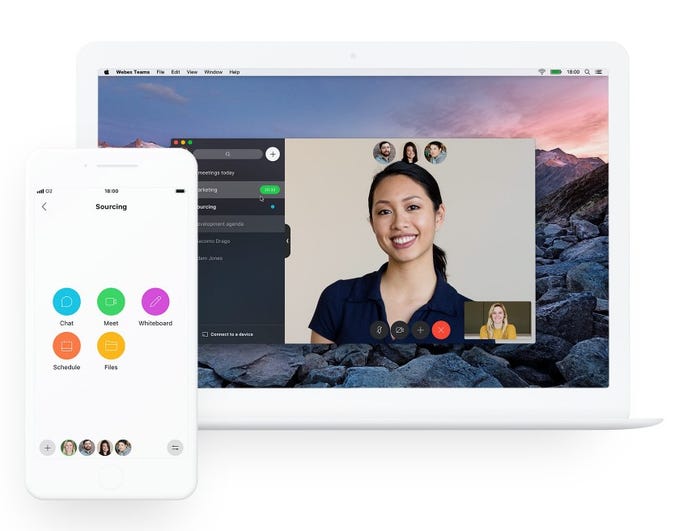Cisco vs. Microsoft in Battle of 'Teams'Cisco vs. Microsoft in Battle of 'Teams'
Now that Cisco has integrated its separate Spark and WebEx messaging and conferencing offerings, the battle lines are drawn with the new WebEx Teams taking on Microsoft Teams.
June 16, 2018

As Microsoft migrates the online version of its Skype for Business and Teams into a single communications, messaging and conferencing platform, Cisco is waging a battle for customer and partner wallet with a “Teams” offering of its own.
Cisco’s new Webex Teams brings together Spark and WebEx solutions, which had many overlapping features. Jonathan Rosenberg, CTO of Cisco’s collaboration business, demonstrated WebEx Teams during this week’s Cisco Live in Orlando, Florida.
“Not only did we bring the brands together, we brought the technologies together,” Rosenberg said. During the demo, Rosenberg showcased the new Webex Teams capabilities such as the ability to render 25 meeting participants in a 5×5 grid; augmented reality with a demo that showed an image of an easel on the stage to viewers in a video conference; the ability to record meetings; and a new mobile client optimized for smartphones.

Cisco and Microsoft are squaring off to become the desktop and mobile collaboration tool of choice among office workers. The decision to use “Teams” with the new brand was a bold statement that the networking giant isn’t going to cede the market to Microsoft. Some observers believe Microsoft has a strong advantage with its Teams offering because it (and the Skype for Business client) are included at no charge with Office 365 business and enterprise subscriptions.
“What we’re seeing is it’s proving to largely be a two horse-race in the budget from IT; it’s Cisco and Microsoft,” Rosenberg said during an interview at Cisco Live. “Frankly, it comes down to the fact that they’re already buying a ton of stuff from Microsoft and Cisco. We are both bundling this software, and our bundles integrate well with all the other stuff they have.”
The latest research by Nemertes Research forecasts that by the end of this year, 33 percent of organizations will use, or plan to use, Microsoft Teams, compared with 21 percent for Webex Teams. While the two are currently the top contenders, Slack remains a popular solution in some segments with nearly 15 percent, and Google Hangouts chat accounts for just shy of 11 percent. The rest include various offerings such as Atlassian Stride, Symphony, Facebook at Work and Mattermost.
“Cisco and Microsoft have large market positions at the moment, both of which are strengthened by their integration into other collaboration applications,” said Irwin Lazar, VP and service director for Nemertes’ unified communications and collaboration practice. In a media roundtable briefing following his keynote, Cisco’s Rosenberg said he doesn’t see his company outmatched by Microsoft.
“It competes and wins,” Rosenberg said. “We’re doing pretty well I would say, actually. It’s early days in this market in general.”
The new Cisco WebEx Teams platform will appeal to enterprise customers with diverse requirements and preferences, according to Adam Preset, research director for the digital workplace practice at Gartner. “Cisco has the heritage and focus to continue to retain a leading position in this market,” Preset said. “Not all buyers want the same things, though. Microsoft Teams will grow based on the gravitational pull of Office 365. Slack and Atlassian are not the same as either of those but they have strengths in other areas.”
Preset added that Cisco has made significant progress in unifying its WebEx products.
“That’s compelling for enterprise buyers who recognize that a one-size-fits-all solution for all their meetings won’t work, because not all workers and not all jobs are the same. With Cisco, though, what they do have is one vendor that can offer options that support personal choice. A worker who mostly prefers WebEx Meetings can meet with someone who mostly prefers WebEx Teams. If your organization has invested in endpoints to have engaging, high-quality interactions over video, it’s a benefit that all of this works together.”
About the Author
You May Also Like


